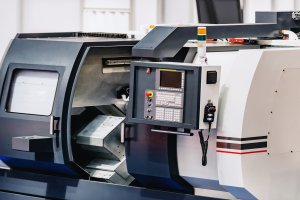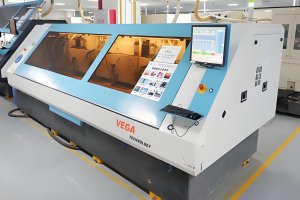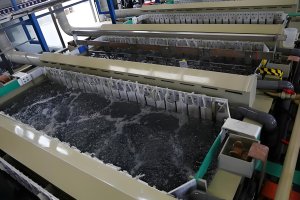Introduction to Polymer Composites and Lightweight Machining
Polymer composites, often simply referred to as composites, are engineered materials made from two or more constituent materials with significantly different physical or chemical properties. When combined, these distinct substances produce a material with unique characteristics, typically exhibiting desirable strength-to-weight ratios, durability, and resistance to heat, corrosion, and wear. These attributes make polymer composites an ideal choice for lightweight machining – a manufacturing process aimed at reducing the weight of final products without compromising their performance or integrity. Lightweight machining is especially critical in industries like aerospace and automotive, where every ounce matters because it directly impacts energy efficiency and overall operational costs.
Rise in Use of Polymer Composites in Lightweight Machining
The manufacturing sector is experiencing a steady growth trend in the usage of polymer composites for lightweight machining. These materials, owing to their inherent properties, have become increasingly attractive to manufacturers. Polymer composites are light yet robust, and they offer exceptional resistance to both heat and chemicals. Additionally, these versatile substances can be custom-designed to meet specific performance requirements, hence often outperforming traditional materials like metal.
- Increased productivity: As opposed to conventional materials such as metals, polymers are significantly lighter which enables ease of handling and transportation thereby increasing efficiency.
- Cut down operational costs: Due to lower tool wear and energy consumption when using polymer composites, manufacturers are able to reduce ongoing expenses and maintenance downtime.
- Innovation opportunities: With polymer composites being customizable to any form, it opens up vast possibilities for disruptive innovations in product design, thereby gaining competitive market advantages.
In view of these benefits, It’s clear why manufacturers continue to turn towards polymer-based composites for lightweight machining solutions. Despite still facing challenges surrounding recyclability and reparability, strides in technology indicate that polymer composites will indeed shape the future of lightweight machining.
Advantages of Using Polymer Composites in Lightweight Machining
Polymer composites offer significant advantages in lightweight machining, including high strength-to-weight ratio, corrosion resistance, and design flexibility. These composites are increasingly being used in industries such as automotive, aerospace, and marine for their ability to reduce overall weight without compromising structural integrity. The use of polymer composites in lightweight machining is paving the way for innovative and efficient manufacturing processes, meeting the demand for high-performance lightweight components in various applications.
Challenges with Polymer Composites
The use of polymer composites in lightweight machining presents a set of distinct challenges. A major hurdle is related to the strength and durability of these materials; while satisfyingly less weighty than traditional machining constituents, they don’t exhibit similar sturdiness or long-term resilience. This weakness may lead to structural failure during high-impact usage or even over time through wear and tear.
- A potential challenge arises from concerns around recycling and environmental impact. Recycling processes for polymer composites are comparatively tricky and energy-demanding, exacerbating their carbon footprint.
- Polymer debris also poses considerable ecological threats due to its non-biodegradable nature.
An example illustrating this issue can be observed in the automotive industry. While lighter cars made from polymer composites offer superior fuel efficiency, end-of-life disposal options remain environmentally challenging given our current technology and practices.
The Role of Innovation in Overcoming Challenges in Lightweight Machining
Research and development have played a significant role in addressing the challenges arising from the use of traditional materials in lightweight machining. Modern science has been instrumental in innovating novel solutions, particularly with the advent of polymer composites. The inherent lightness of these materials combined with their strong mechanical properties makes them ideal for various applications in industries such as aerospace, automotive, and military.
An exemplary illustration of technological advances is the creation of carbon fiber-reinforced polymers (CFRPs). These composites are lighter than aluminum yet stronger than steel, characterizing an impressive strength-to-weight ratio:
- They offer high stiffness, making them resistant to deformation or structural changes under applied force.
- Compared to metal-based counterparts, CFRPs show superior corrosion resistance.
- Their excellent fatigue properties give them a longer lifespan compared to other materials.
Overall, these technological innovations serve as game-changers in the field of lightweight machining and its future possibilities.
Future Prospect of Polymer Composites in Lightweight Machined Parts Manufacturing
The anticipated growth in the use of polymer composites for lightweight machining signifies a major shift in manufacturing paradigms. Skilled operators are preparing to implement these materials into diverse applications, driven by their unique blend of qualities including mechanical strength, considerable lightness and impressive resistance to corruption. Advancements continue at great pace, with researchers persistently experimenting on ways to heighten the efficiency of processing procedures and extend longevity.
- One upcoming improvement is the development of high-performance Thermoplastic Composites (HTPCs), projected to revolutionize the industry because of its dual attributes of durability and recyclability.
- Building upon pre-existent technology, innovators aim to develop refined Fiber Reinforced Polymer Composites (FRPCs) that possess superior thermal stability and corrosion-resistance capabilities.
- A breakthrough expected within this domain includes leveraging smart polymers’ adaptive behavior characteristics to suit various environmental conditions.
The increasing prominence of polymers signals an optimistic future for the sector, as producers endeavor to meet demanding performance metrics while ticking necessary sustainability checkboxes.
Other Articles You Might Enjoy
- Understanding Bead Blasting in CNC Machining(cnc g code Jacqueline)
CNC (Computer Numerical Control) machining is a dominant method employed for multiple manufacturing systems across the globe. From healthcare to aerospace, this technology has revolutionized how we manufacture products. One…
- CNC Machining for the Renewable Energy Sector: Material Choices for Durability and Efficiency
Introduction to CNC Machining in the Renewable Energy Sector CNC (Computer Numerical Control) machining stands as a pivotal manufacturing process in the renewable energy sector, enabling the precise production of…
- High Volume CNC Machining in Copper: Efficiency at Scale
Introduction to High Volume CNC Machining in Copper CNC (Computer Numerical Control) machining is a subtractive manufacturing process involving pre-programmed computer software dictating the movement of factory tools and machinery.…






